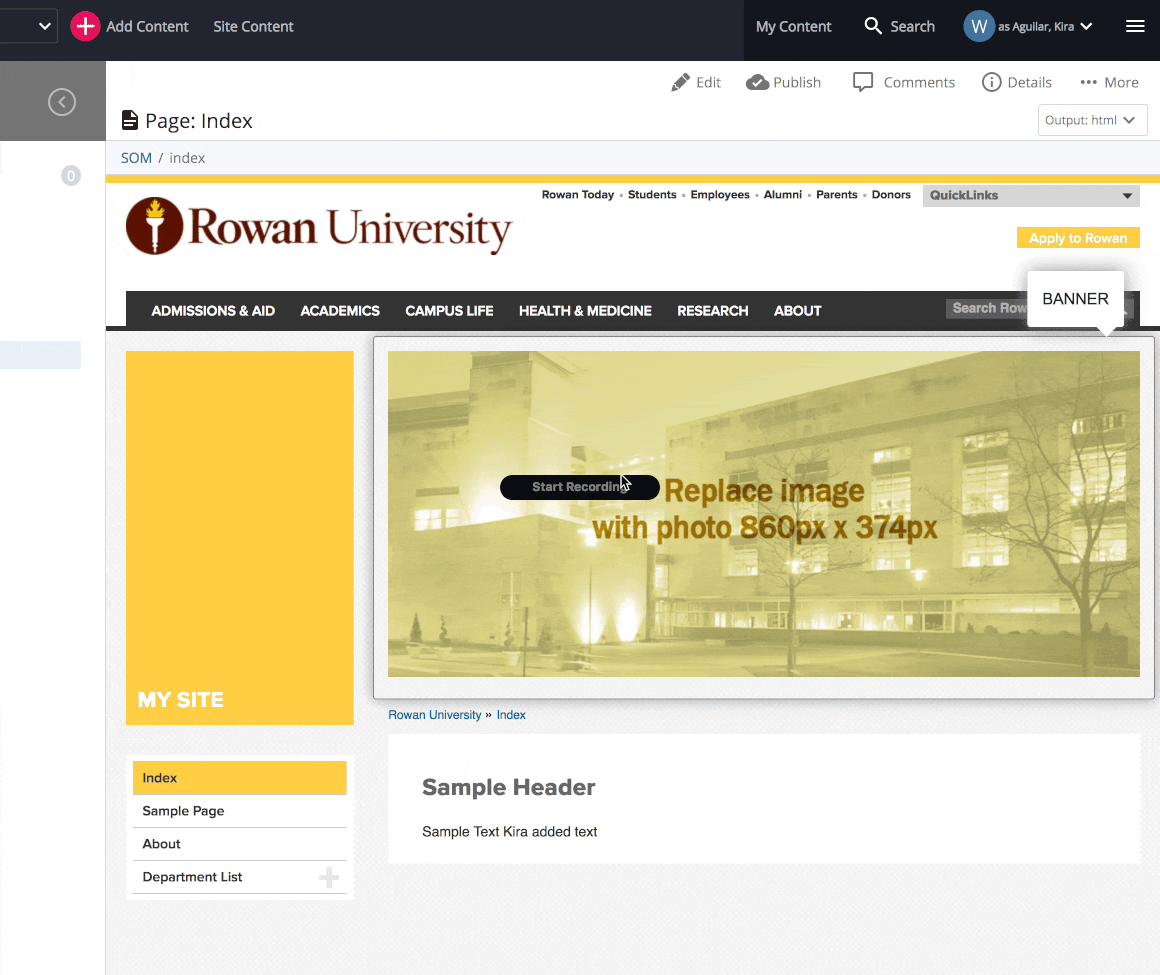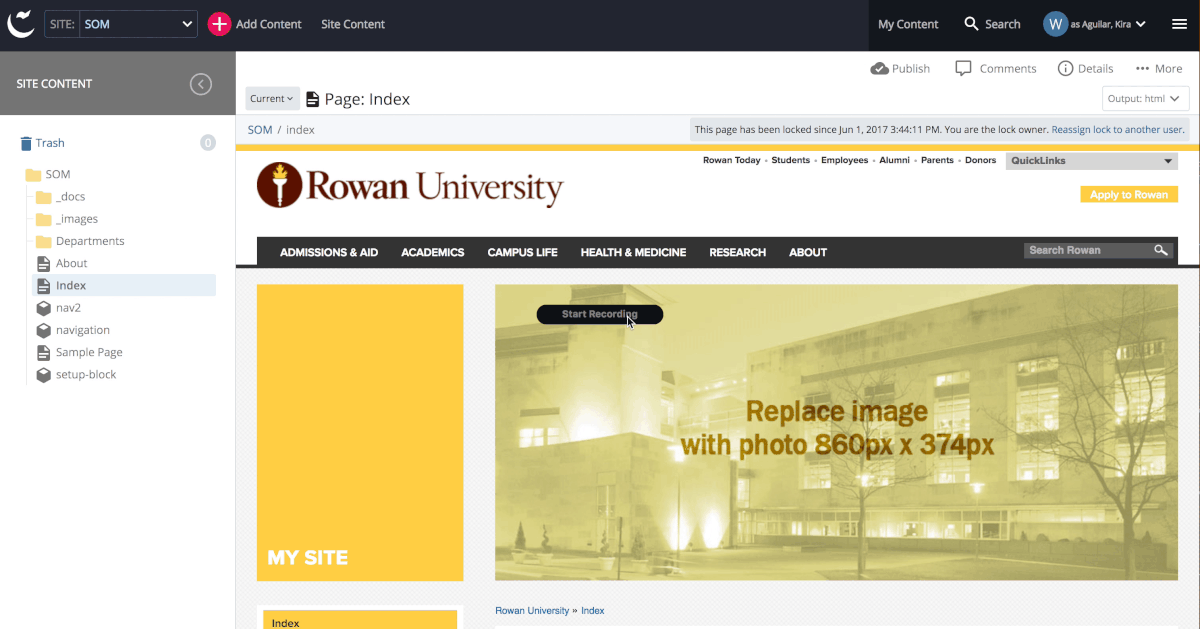Page Locks
Page Locks
Page Locks
Consider this scene. Tom and Diane are coworkers able to edit the same web pages.
- At 10am Diane opens a web page to edit, gets called away. The page remains open. Remember how Cascade CMS works! When Diane opens the page, Cascade saves her draft in Cascade. If Diane hasn't submitted her changes, only she can see her changes.
- At 11am Tom begins editing the same web page. After an hour or two of work, he submits that page and publishes it.
- At 3pm Diane finally gets back to her page, finishes making her edits, submits and publishes her page.
- Result: Tom loses all of his hard work.
We can recover Tom's work for him by retrieving a prior version, but then we'll lose Diane's work.
Cascade CMS would have attempted to protect Tom's draft by telling Diane that he had a draft out when she attempted to edit the page. That warning would look something like this:

This alert tells the user to send a page comment to Harriet so they can compare efforts. Meanwhile, if Harriet opens the page to edit it further, she'll see the same note telling her about the other person editing the page and before submitting she will get a warning:

In both cases both people can easily ignore the warning, edit the page, submit it and potentially over write someone's work.
The best way to avoid all of this confusion and protect your work is to use a page lock. A page lock does more than just alert; it requires that a draft be actively unlocked or reassigned before editing.
To set a lock
In Cascade CMS, go to the page you plan to edit
- Click "more" in the upper right hand corner
- Choose "Check out/Lock"

Once a page is locked, Cascade CMS creates a "working copy" for it. Working copies are like drafts but better. Only you can see your draft, but other editors CAN see your working copy.
Result of locking
Let's look back at our case study above only this time use a page lock.
At 10am Diane begins opens a web page to edit, CREATES A PAGE LOCK, gets called away. Cascade CMS creates a working copy.
At 11am Tom tries editing the same web page. He sees these changes at the top of the page:

Tom can
- see that Diane is working on the page right away.
- see what she has done so far by viewing the "working copy."
- click on the words "request unlock of asset" to automatically send Diane a request to unlock the page.
If he sends a request, Diane will get that notification in her notification widget or on her notification page:

Resolving a lock
Diane can either:
- break the lock (destroying the working copy),
- commit the changes (submitting her working copy), or
- reassign the lock to Tom so he can take over where she left off. (She could also reassign it to someone else on her team.)
In order to respond, she must first view the working copy by choosing it from the dropdown area at the top and left of the page. Then choose an option.
